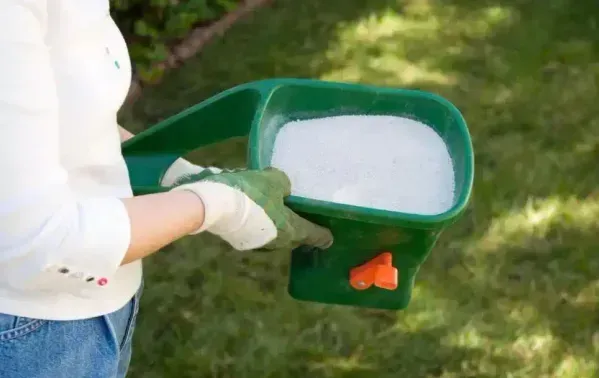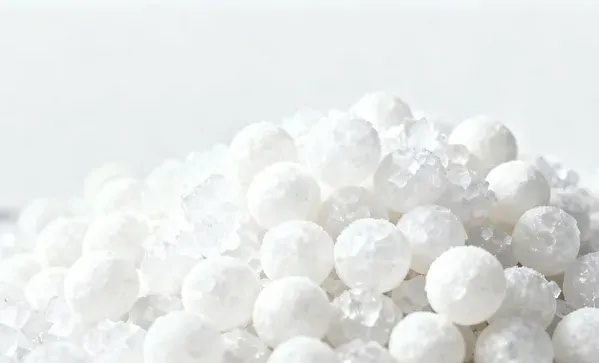Avoid your inquiry is delay response, please enter your WhatsApp/Skype along with the message, so we can contact you at the very first time.
We will reply you within 24 hours. If for urgent case, please add WhatsApp/WeChat:
Warning: Undefined variable $public in /www/wwwroot/lvfertilizer.com/wp-content/themes/hyhadmin/header.php on line 350
Warning: Trying to access array offset on value of type null in /www/wwwroot/lvfertilizer.com/wp-content/themes/hyhadmin/header.php on line 350
,. Or call
Warning: Undefined variable $public in /www/wwwroot/lvfertilizer.com/wp-content/themes/hyhadmin/header.php on line 350
Warning: Trying to access array offset on value of type null in /www/wwwroot/lvfertilizer.com/wp-content/themes/hyhadmin/header.php on line 350
directly.
Many farms struggle with uneven feeding. Mixed products can overfeed one nutrient and starve another. Straight fertilizer lets you target exactly what the crop needs—no more, no less.
Straight fertilizer is a single nutrient product (for example, urea, monoammonium or potassium sulfate) rather than a blend. It delivers one major nutrients type at a time—nitrogen, phosphorus, or potassium—so you can fine-tune nutrient management by crop stage, soil test, and yield target, or combine it with compound fertilizer when needed.
As a leading manufacturer and exporter of high-quality fertilizer products in China, Lvfeng fertilizer supply a complete portfolio of straight fertilizer grades for distributors, cooperatives, and OEM brands. We keep logistics simple, quality consistent, and private-label options flexible—so you can stock the right SKUs and help growers feed crops with precision.
Straight fertilizer is a product that supplies one primary nutrient at a time—typically nitrogen, phosphorus, or potassium. Because it carries only one headline nutrient, you can correct a specific shortage precisely, then layer other products to reach a balanced plan. It is ideal when soil tests are clear about what is low.

What is straight fertilizer
By contrast, compound fertilizer pre-mixes multiple nutrient elements (for example, npk blends). That’s convenient for general feeding, but if your soil has good phosphorus yet lacks potassium, you might buy more P than you need. Smart programs often combine both, using straight grades to fine-tune the balance of nutrients across growth stages.
Key benefits of straight fertilizer
“Feed what’s missing, not what’s already enough”—this is how we help partners design simple, effective programs that align with agronomy best practices (FAO, 4R Nutrient Stewardship).
Common nitrogen sources vary in behavior:
Match the nitrogen fertilizer to your timing: urea is efficient pre-plant; ammonium nitrate or calcium nitrate suit cool soils or quick green-ups; ammonium sulphate is great when sulfur is needed and mild acidification helps soil structure and micronutrient uptake.
Note on forms: the nitrate form is already in the nitric state (NO₃⁻), moving quickly to the plant root; the ammonium form (NH₄⁺) holds a bit longer in soil, which can steady feeding for root systems.
Phosphorus drives early plant growth, roots, and energy transfer. Key phosphorus fertilizer options include:
Pick P sources by placement and water quality. Where P is tied up, banding or localized placement improves efficiency. In greenhouse systems, MKP shines for precise dosing and clean tanks with excellent solubility.
Potassium strengthens stems, improves water balance, and supports sugar movement—vital for crop growth and fruit quality. Popular K sources:
Crops like potato, tobacco, strawberry, and some greenhouse fruiting crops often prefer low Cl. Field grains commonly accept MOP well. Always consider local water, soil salinity, and the final market quality targets to pick the right potassium fertilizer.
| Crop group | Tolerance to chloride | Preferred K source note |
| Potato, strawberry | Low | SOP favored |
| Tobacco | Very low | SOP strongly favored |
| Tomato, pepper (greenhouse) | Low–medium | SOP or partial SOP |
| Maize, wheat | Medium–high | MOP acceptable |
The accompanying anion matters. Sulphate sources (e.g., SOP, ammonium sulphate) lower pH slightly and provide sulfur. Chloride in MOP can be fine for tolerant crops but less ideal for sensitive fruit quality. Monitor soil acidity and salinity to keep roots comfortable.
Solubility helps in fertigation. Clean, highly pure soluble grades reduce clogging and ensure nutrients move evenly to the plant root zone. For broadcast, prill strength and uniform size support even spreading and predictable release.
Form affects handling. Granular straight grades spread evenly in broadacre, with prills that flow well. Crystalline forms shine in fertigation tanks, offering quick dissolve and clear solutions.
Quality granulation ensures each granule carries consistent analysis. That improves uniformity across the field and supports steady plant growth. We verify hardness, size distribution, and anti-caking behavior to keep blending and application smooth.

why granule quality counts
Match timing to plant growth and development:
A flexible program uses soil tests, tissue tests, and weather to adjust application rates while protecting quality and profit.
In protected systems, choose clean, available fertilizer salts that stay clear in tanks. Keep an eye on bicarbonate in irrigation water; high bicarbonate can raise pH and reduce P availability. Blend acids or switch sources to keep drippers free and nutrients in the right form.
Straight soluble grades like MKP, calcium nitrate, and magnesium salts allow precise EC/ratio control, stable pH, and quick response. Always trial small before shifting whole houses, and document changes to link them to yield or quality gains.

Greenhouse and fertigation
Every bag of fertilizer should list nutrient analysis (for P as phosphorus pentoxide and K as K₂O), lot number, and origin. Inspect for dust, caking, or damaged sacks on arrival, then follow best-practice transport and storage: dry floor, pallets, covered stacks, and FIFO rotation.
We help importers with documents, labeling, multi-language instructions, and OEM branding. For port-side warehouses, we can tailor prill size, anti-caking, and packaging to match spreading equipment and climate.
Below is a simplified illustration. Always base fertilization on local tests and targets.
Rice (paddy):
Maize:
Greenhouse tomato:
Distributors need flexible SKUs and reliable fertilizer supplies. We stock mainstream straight grades and can build custom packs (25 kg and 50 kg). For OEM, we co-design artwork, language, and agronomy sheets. Ask us about all-purpose starter blends alongside straights to simplify first orders.
We coordinate shipping windows to match seasons and help plan reorder triggers based on historical demand so you never miss a window for crop growth.
We manufacture inorganic straight grades with strict QC, using highly pure inputs and on-line monitoring. Whether you need prilled urea, premium SOP, or clean MKP, our lines emphasize consistency, safety, and traceability. We support organic and inorganic programs—adding organic matter improves soil structure and long-term resilience while straights deliver exact, measurable nutrients.
| Product | Typical analysis | Form | Notes |
| Urea | 46-0-0 | Prilled | Economical N; incorporate for best efficiency; easy to fertilize large acres. |
| Ammonium sulphate | 21-0-0 + 24% S | Prilled | N + S; mild acidifying. |
| Ammonium nitrate | 34-0-0 | Prilled | Reliable in cool soils; regulations vary. |
| Calcium nitrate | 15.5-0-0 + Ca | Prilled/Soluble | Fast nitrate; improves firmness. |
| Single superphosphate | 16–20% P₂O₅ | Granulated | Adds P + S; dependable starter phosphorus. |
| MAP (Monoammonium) | 11-52-0 | Granulated | Concentrated P with ammonium. |
| MKP (Monopotassium phosphate) | 0-52-34 | Crystalline | Clean, soluble P + K for fertigation. |
| MOP (Potassium chloride) | 0-0-60/62 | Granulated | Cost-effective K; watch chloride on sensitive crops. |
| SOP (Potassium sulfate / sulphate) | 0-0-50 + 18% S | Granulated/Soluble | Low Cl; quality fruit/veg. |
Chloride-sensitive? Favor SOP and MKP. Tolerant field crops? MOP often fits budgets. Remember K⁺ is a cation—high exchange capacity soils hold it better.
A 5-ha greenhouse operation swapped MOP for SOP during fruit fill, keeping total K equal. Result over two cycles: improved Brix by ~0.6 units and smoother skin finish, with fewer blossom-end defects. Cost per tonne rose slightly, but premium price more than covered the change. This is a practical example of straight potash choice improving quality.
What’s the fastest way to correct an N shortage right now?
Choose a nitrate source like calcium nitrate or ammonium nitrate (where allowed) for quick response; both deliver immediately usable N. In warm conditions with irrigation, urea also works well if incorporated or watered in.
How do I choose between MOP and SOP?
Check crop tolerance to chloride and your salinity risk. For sensitive fruits or quality-driven greenhouse crops, SOP usually wins. For tolerant field crops and tight budgets, MOP is often fine.
Can I mix straights with blends?
Yes. Many programs start with a blend, then add straight fertilizer to fine-tune the exact nutrient you’re missing. This keeps costs in check while meeting targets.
Are straights only for big farms?
No. Small farms gain the same precision. Even one switch—like MAP at seeding or SOP during fruiting—can improve results.
Can I apply P and K through leaves?
Yes, with a registered foliar fertilizer and proper foliar application rates. In high-value crops, MKP foliar can support fruit finish; always trial small areas first.
What about trace elements with straights?
Add trace elements separately as needed. For iron corrections, sulphate of iron is a common option; chelates are useful in high-pH soils.
We can also co-develop private labels and guides, making your shelves look unified and professional.
| Straight product | Headline nutrient(s) | Typical use case | Chloride flag | Extra notes |
| Urea | Nitrogen | Pre-plant, side-dress | None | Stabilize or incorporate; very efficient per dollar. |
| Ammonium sulphate | Nitrogen + S | Where sulfur is low | None | Mild acidifying effect can help micronutrient availability. |
| Ammonium nitrate | Nitrogen | Cool soils, quick greening | None | Regulatory status varies; handle per rules. |
| Calcium nitrate | Nitrogen + Ca | Greenhouse veg, fruit firmness | None | Fast uptake; compatible with many soluble feeds. |
| Single superphosphate | Phosphorus + S | Starter P, broadacre | None | Consistent performer in many soils. |
| MAP (Monoammonium) | Phosphorus + N | Banding at seeding | None | High analysis; reliable starter. |
| MKP | Phosphorus + Potassium | Fertigation/foliar | None | Clean, low salt index; good for quality. |
| MOP (KCl) | Potassium | Cost-effective K | High | Avoid where chloride sensitivity or salinity issues exist. |
| SOP (K₂SO₄) | Potassium + S | Chloride-sensitive crops | Low | Preferred for quality fruit and greenhouse crops. |
(See: FAO Plant Nutrition, Nutrient Stewardship, IFA)